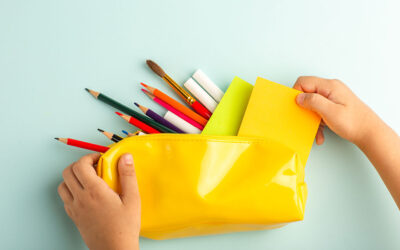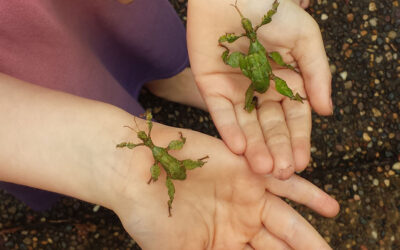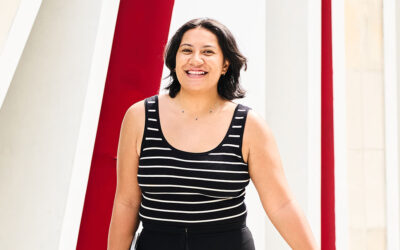Does your child have a vivid imagination that lands them in ‘trouble’?
During my thirty years as a primary school teacher, I’ve often come across children just like this – children who, by using their imagination, land themselves in trouble. They might become a little too enthusiastic with their imaginative play, especially out in the playground.
Many of these incidents became the inspiration for the main character in my book, Trouble for Toby, and often occurred when two or more different games collided in the same play area.
Imaginative play refers to situations in which a child is role playing experiences. Whether pretending to be a pirate in the sandpit or a Jedi on the playground. It’s fun and a vital part of a child’s social, emotional and cognitive development.
However, I’ve often questioned where we – as parents, teachers or caregivers – need to draw the line and create boundaries for the imagination.
Should we discourage imaginative play if it leads to behavioural problems?
Using the imagination is more than just making up stories and acting them out:
- Imaginative play teaches children to handle various situations within their environment.
- It helps them develop and practise problem solving and critical thinking skills that will take them on through their childhood.
- It encourages active learning, where the child takes on a role in the activity, rather than passive learning, where the child is fed information. Passive learning is generally adult or teacher-centred, while active learning allows the child to be part of the learning process.
- It allows children to experiment with new and different ways of doing things in a safe and secure environment.
- It leads them to negotiated play as they learn to interact with other children, boosts their self-reliance and confidence, and encourages reluctant children to participate in play experiences.
Through play, children learn of the world about them. But just how do we keep the play environment safe and secure for all children? Well, this is where the boundaries, or the rules, come in.
Within societies, we have rules, and these rules are meant to keep everyone safe. It is no different in the child’s play world. Setting boundaries in the play environment is the way children learn about social constraints in the real world. Boundaries allow children to understand appropriate behaviour in different circumstances, help them feel safe by reducing the uncertainty in play, and give them a chance to begin making small decisions in their lives – a skill that will take them through childhood and into adulthood.
But can we expect that children will always stay within the boundaries that have been set, and what happens when they step outside with their imagination?
It is important to remember that pushing boundaries does not always result in negative behaviour. Indeed, pushing boundaries lets children make some great discoveries about themselves, about others, and about the world around them. Pushing boundaries can help children realise their potential. It shows them they can achieve goals they may not have believed they were capable of. Children realise this potential when they are allowed the freedom to tap into their imagination.
While it is important to have rules in place during play, we also need to be sure (as parents and teachers) they don’t prevent reluctant children from attempting something they would like to try.
RELATED:
Sparking early literacy with creative play
Sensory play and its importance in early learning
What is play-based learning in pre-school?
In my book, Trouble for Toby, Toby often finds himself in trouble when he uses his imagination. He doesn’t see a sandpit – he sees a pirate beach; he doesn’t see a fort – he sees a spaceship.
Unfortunately, he becomes so caught up in his game, he forgets others are playing in the same area. When Jenna makes her way to the other side of the bridge because she is a Billy Goat Gruff, there is a clash of imaginations.
While there should be no suggestion that either Toby or Jenna stop using their imaginations, they both need to remember there are boundaries and rules surrounding play, and a need to respect other children’s games and the shared space they are using to avoid accidents. While they still have the freedom to choose where to play, they are aware other children are using the same area.
It’s our role as parents, guardians and teachers to encourage imaginative play. But also make children aware that others are sharing their creative space.
So how do we steer children into imaginative play?
- Children need time space – both indoor and outdoor – to play.
- They need to be given the choice of what they play so their individual needs, capabilities and interests are accommodated.
- They should have access to equipment and toys that encourage imagination. Just as Toby, in the book, uses the fort as a spaceship yet Jenna uses it as a river bank. A sheet and a table may be household items, but to the child they might be a tent on a deserted island or an igloo in the Arctic Circle. A plastic dog may become a fearsome wolf, and the tree house might be the queen’s castle.
While children may need adult guidance from time to time, they still need the opportunity to solve problems in their own way. To make choices and be messy, at least some of the time.
Getting into trouble is part of learning, and children are always learning. By encouraging them to use their imaginations in play, they are also learning about the rules and the boundaries of their world in a way that keeps everyone safe.
An imaginative mind does not necessarily lead to behavioural issues. But it will allow children to learn about their environment and how they are expected to live in it.
By Janet Reid


